Gruinard Bay
Geological Conservation Review site | GCR #1498 | Stratigraphy | Permian - Triassic
Geological Conservation Review site | GCR #1498 | Stratigraphy | Permian - Triassic
Scotland's geosites are chosen because of their local, national or international importance. Take only photos, leave only footprints: avoid causing any damage to this site. You can walk almost anywhere in Scotland without the need to ask permission or keep to paths, but you have a responsibility to care for your own safety, to respect people's privacy and peace of mind and to cause no damage.
The right of access does not extend to quarries, building sites or any land where public access is prohibited, or to the collection of geological samples.
This section of coastline exposes a variety of Triassic Stornoway Formation rocks which lie unconformably above Torridon Aultbea Formation conglomerates and breccias.
Triassic Stornoway Formation rocks vary from coarse to fine orange sandstone and include nodules and beds of thick calcrete in places. There is a general dip towards the east and north-east of up to 20°, as seen on the foreshore south of Udrigle. Torridon Group (Aultbea Formation) rocks form the basement over which the Triassic rocks have been deposited. There is therefore a considerable unconformity, seen best near the jetty at NG 9020 9253 where Triassic beds can be seen overlying Torridonian breccias.
At Laide Post Office/shop on the A832, take the minor road going north towards Udrigle and Achgarve. To reach the south end of the coast section, parking is available on a lay-by about 400 m north of the road junction where a footpath goes down to the shore just north of the ruined chapel and graveyard. About 500 m farther north along the road is a lane to the right which reaches a small jetty at a point where there is access to the Torridonian/Triassic unconformity. The northern section of the coast is accessible from Udrigle.
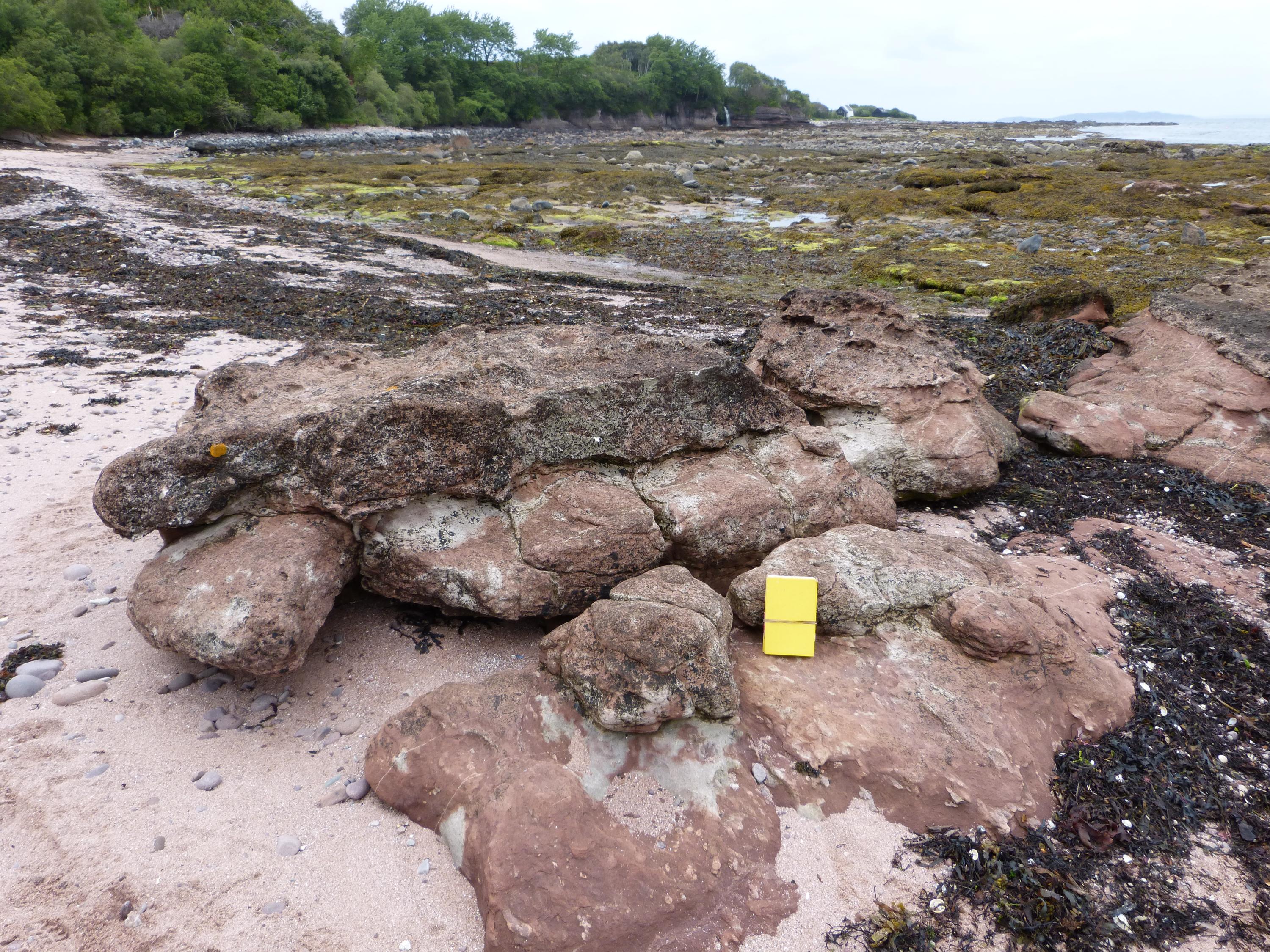
The exposures on the shore in front of the graveyard are red medium-grained Triassic sandstones with irregular bedding, gently dipping towards the east. Features include pale green areas of reduced iron cement and thin nodular bands of calcrete.
Alison Tymon
June 10, 2024
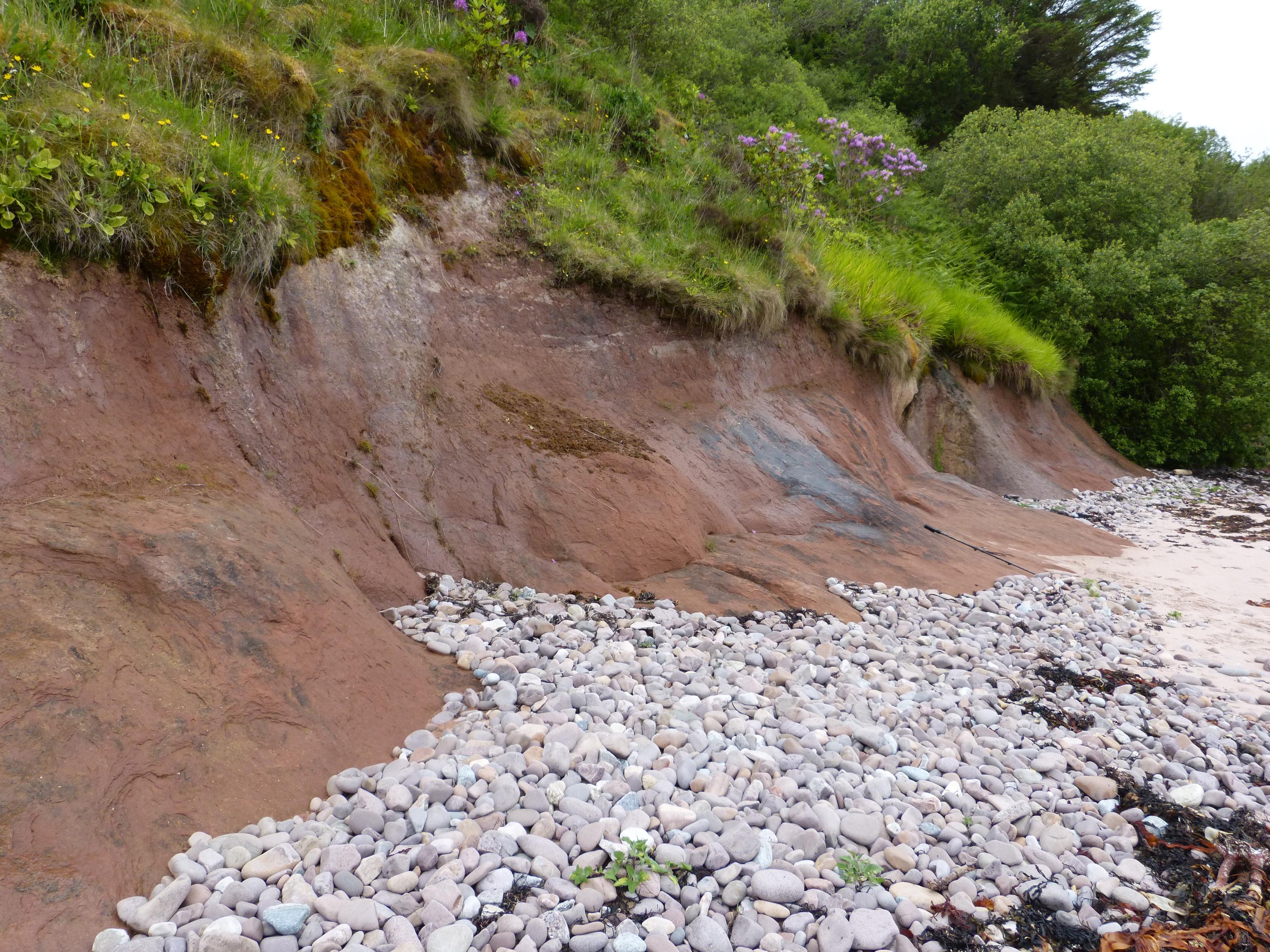
A three metre high face of very fine-grained, loosely consolidated Triassic sandstone forms a short section of the low shoreline cliffs. In the upper metre of the face are irregular patches of pale green reduced cement.
Alison Tymon
June 10, 2024
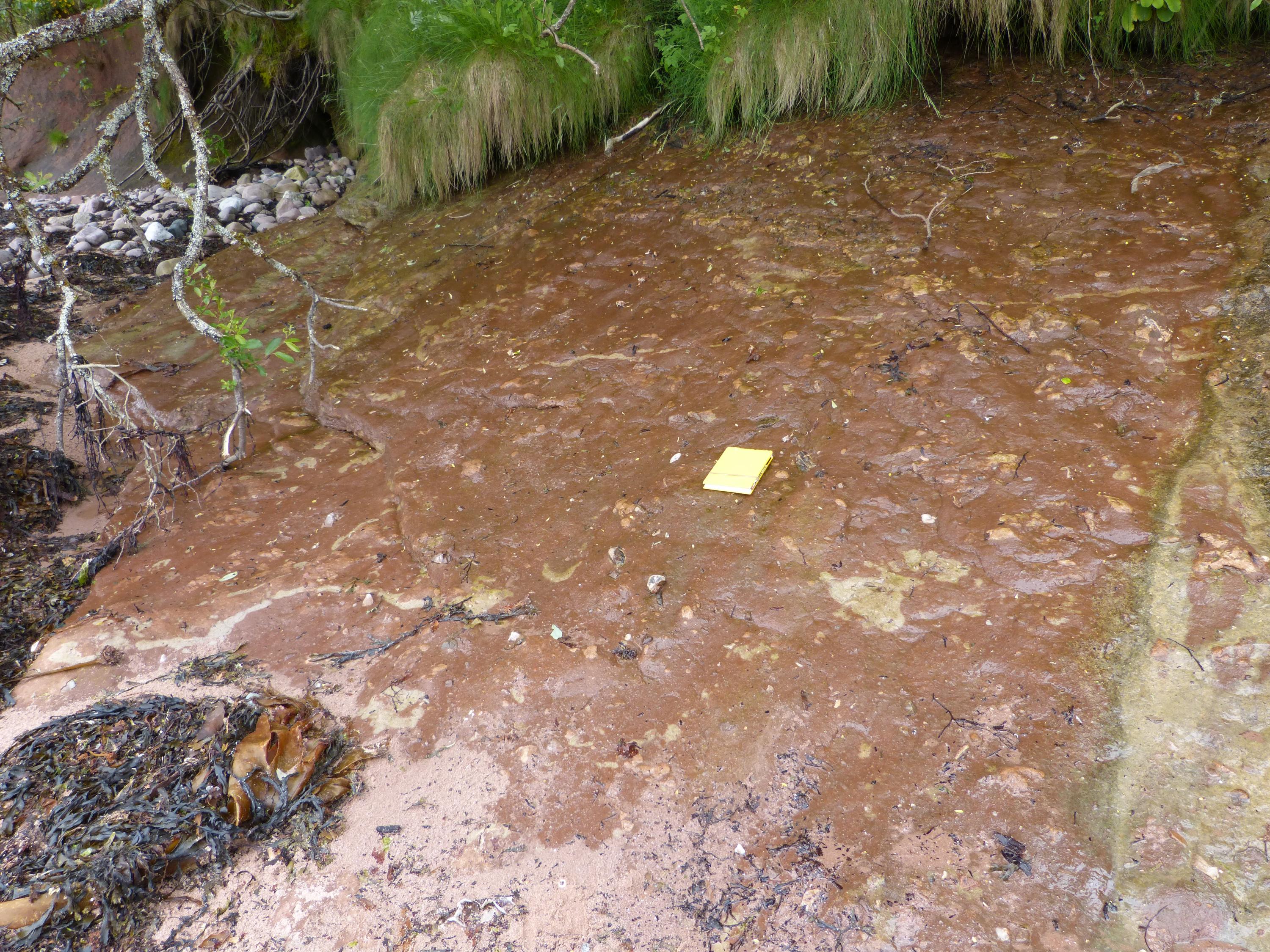
Under trees a few metres from the exposures of very fine sandstone is a bedding plane which dips at 20° towards the north-east. The sandstone is consolidated and speckled with small calcrete concretions and plentiful irregular patches of reduced iron cement.
Alison Tymon
June 10, 2024
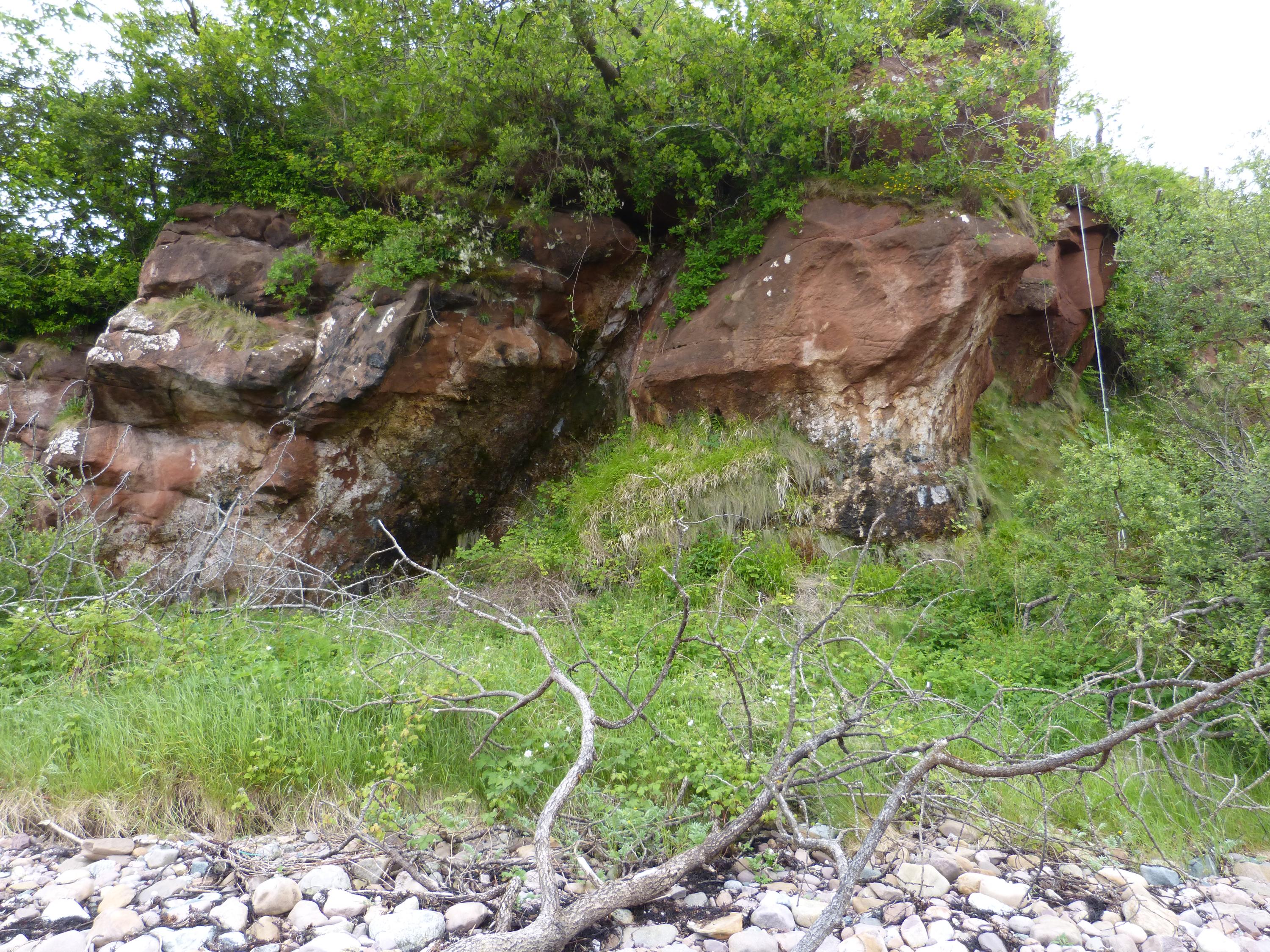
The upper part of the eight metre high crag has several massive beds of orange sandstone, clearly much more resistant to erosion than the fine grained sandstones at the base of the cliff, seen farther along the shore to the south. Undercutting by wave erosion of the less well-cemented sandstone is taking place along the shoreline.
Alison Tymon
June 10, 2024

From this position on the shore platform it is possible to look south at the shore platform and low cliffs of Triassic sandstones towards the ruined chapel at the south end of the GCR site.
Alison Tymon
June 10, 2024
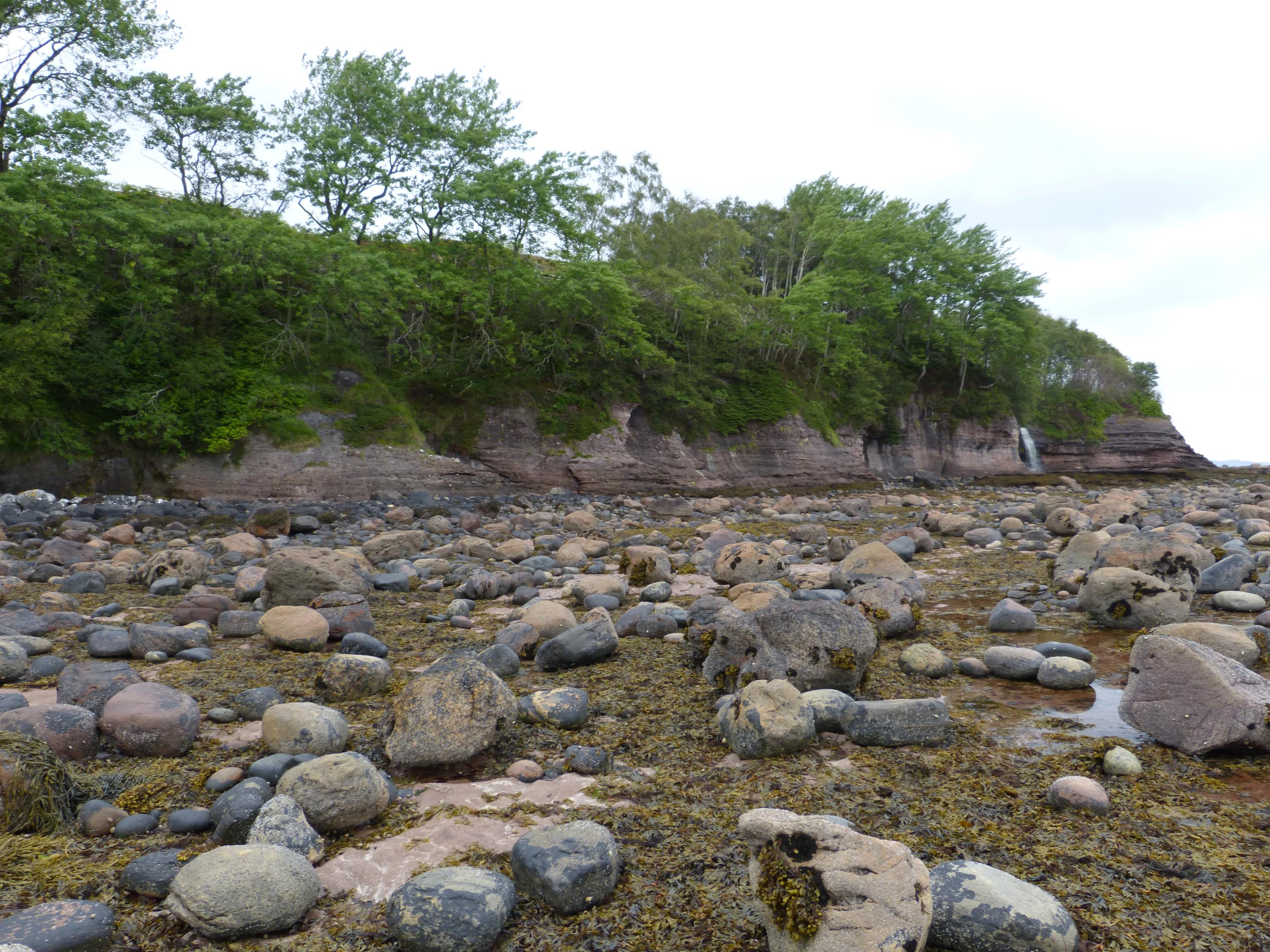
The waterfall cascades over a cliff of Torridon Group (Aultbea Formation) breccia and sandstone beds. The junction between the Triassic and the Torridonian rocks lies under the trees at the extreme left of the photo.
Alison Tymon
June 10, 2024
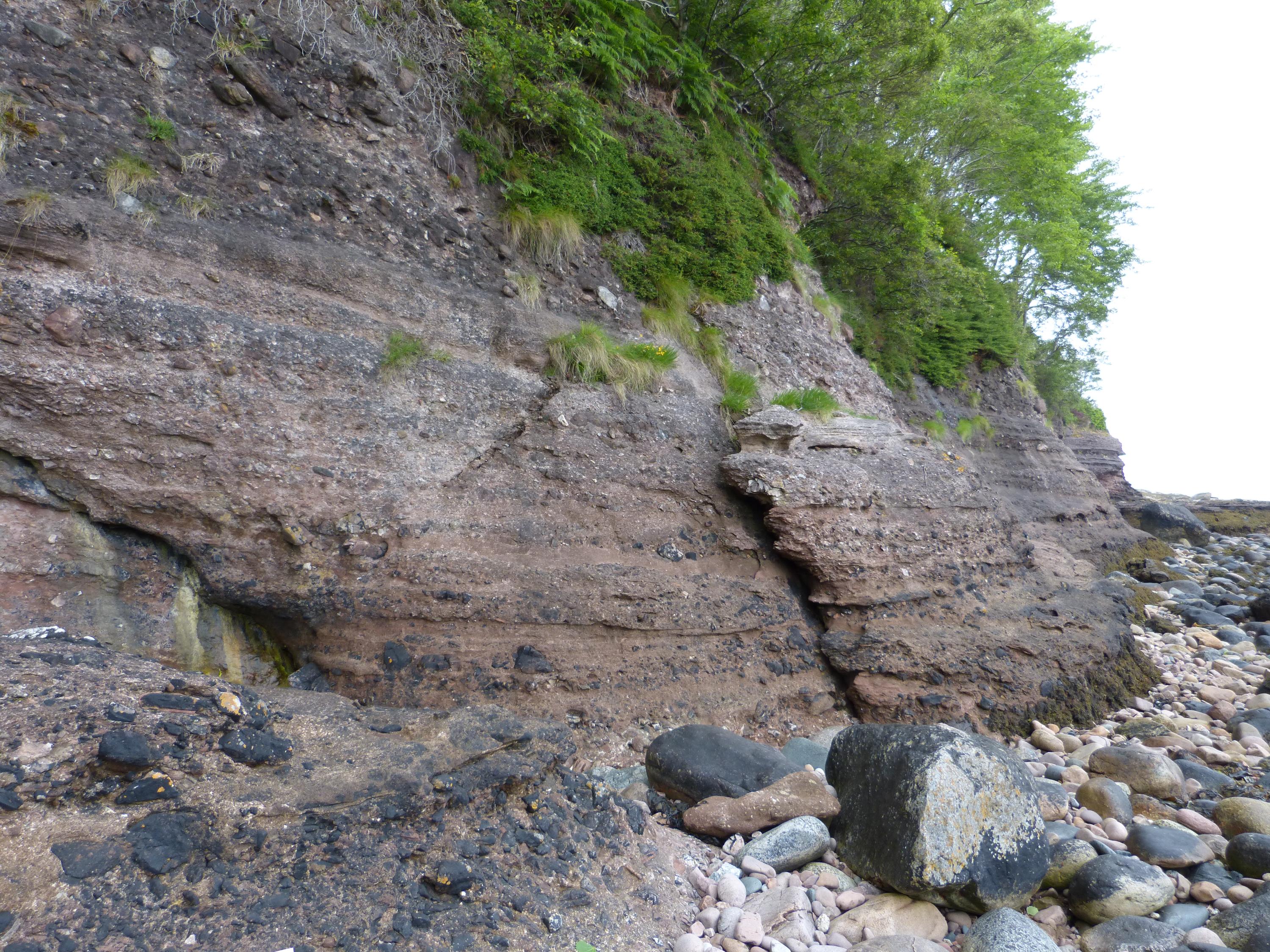
The Torridonian rocks lie horizontally in beds of varying thickness, ranging from a few centimetres up to several metres. The thicker beds of breccia include angular and sub-angular clasts up to 0.5 m in size with a variety of compositions. The sandstones that form the thin beds between the breccias are coarse to granular in grain size.
Alison Tymon
June 10, 2024
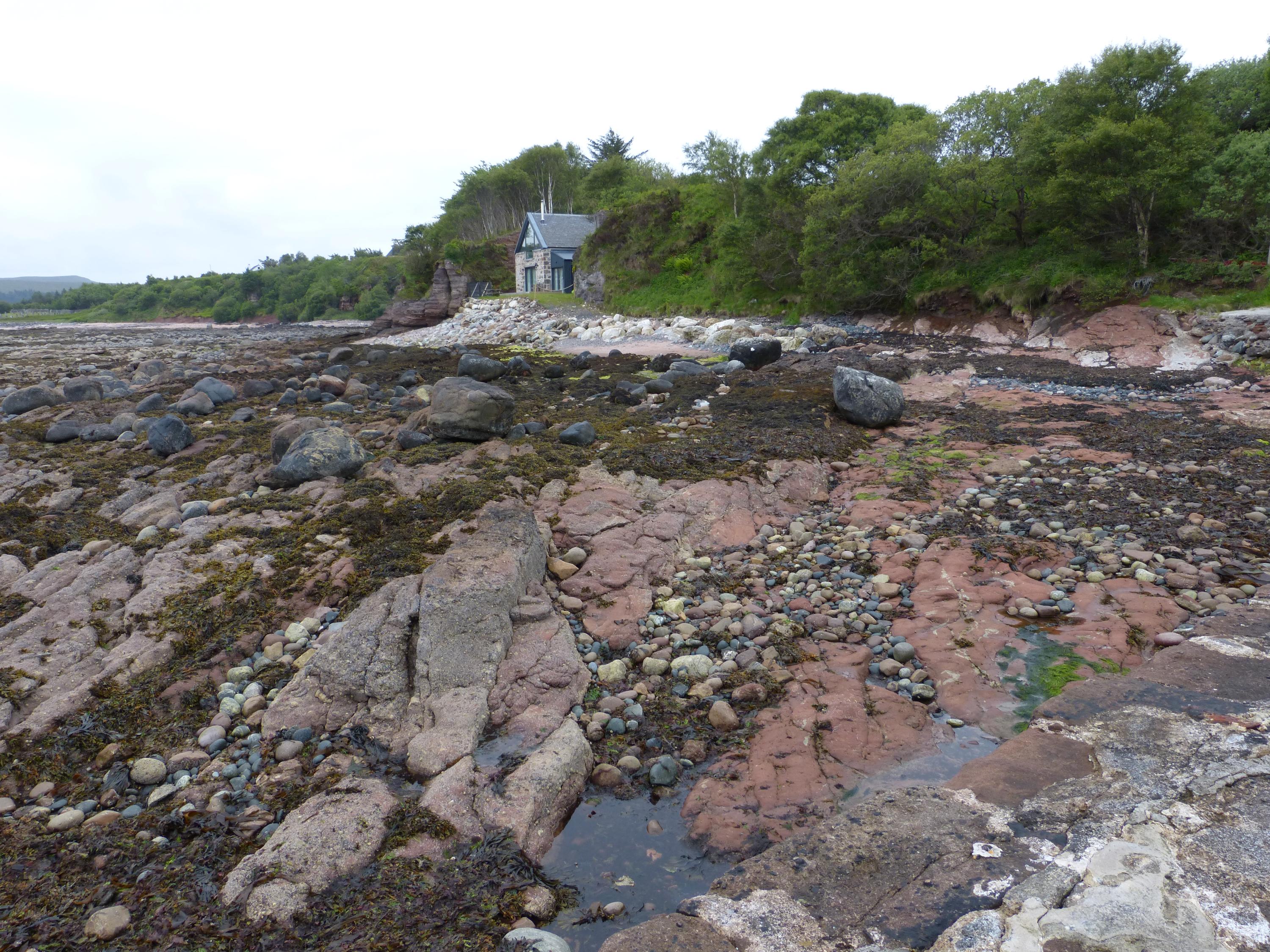
In the area of the jetty, beds of orange Triassic sandstones with reduced iron patches dip gently eastwards. The Torridonian breccias form the cliffs beyond the house on the shore.
Alison Tymon
June 10, 2024
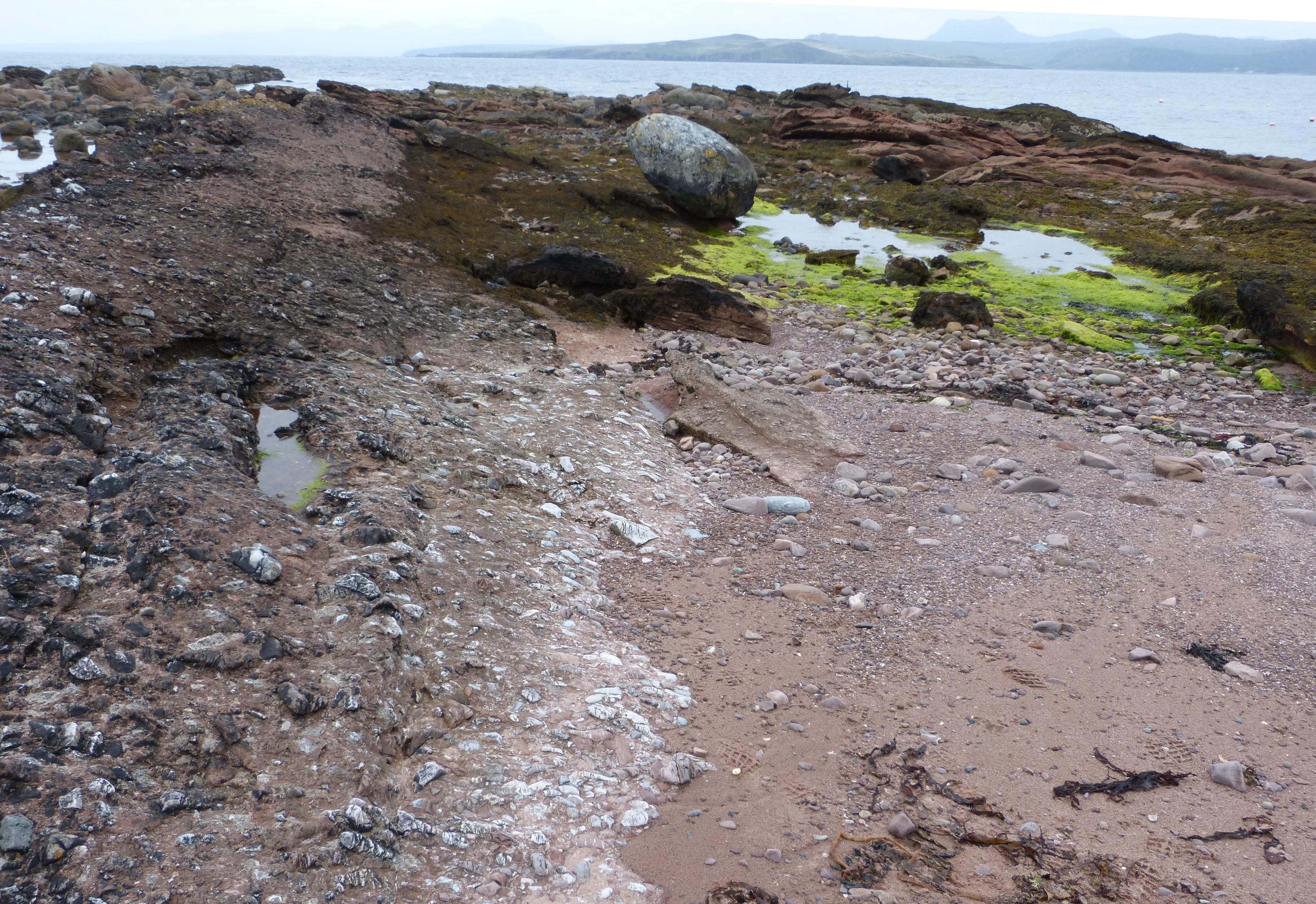
Sub-rounded and sub-angular clasts in the Torridonian breccia include red sandstones with thin quartz veins, banded gneiss and metaquartzite. The Torridonian/Triassic unconformity lies in the depression marked by the large erratic.
Alison Tymon
June 10, 2024
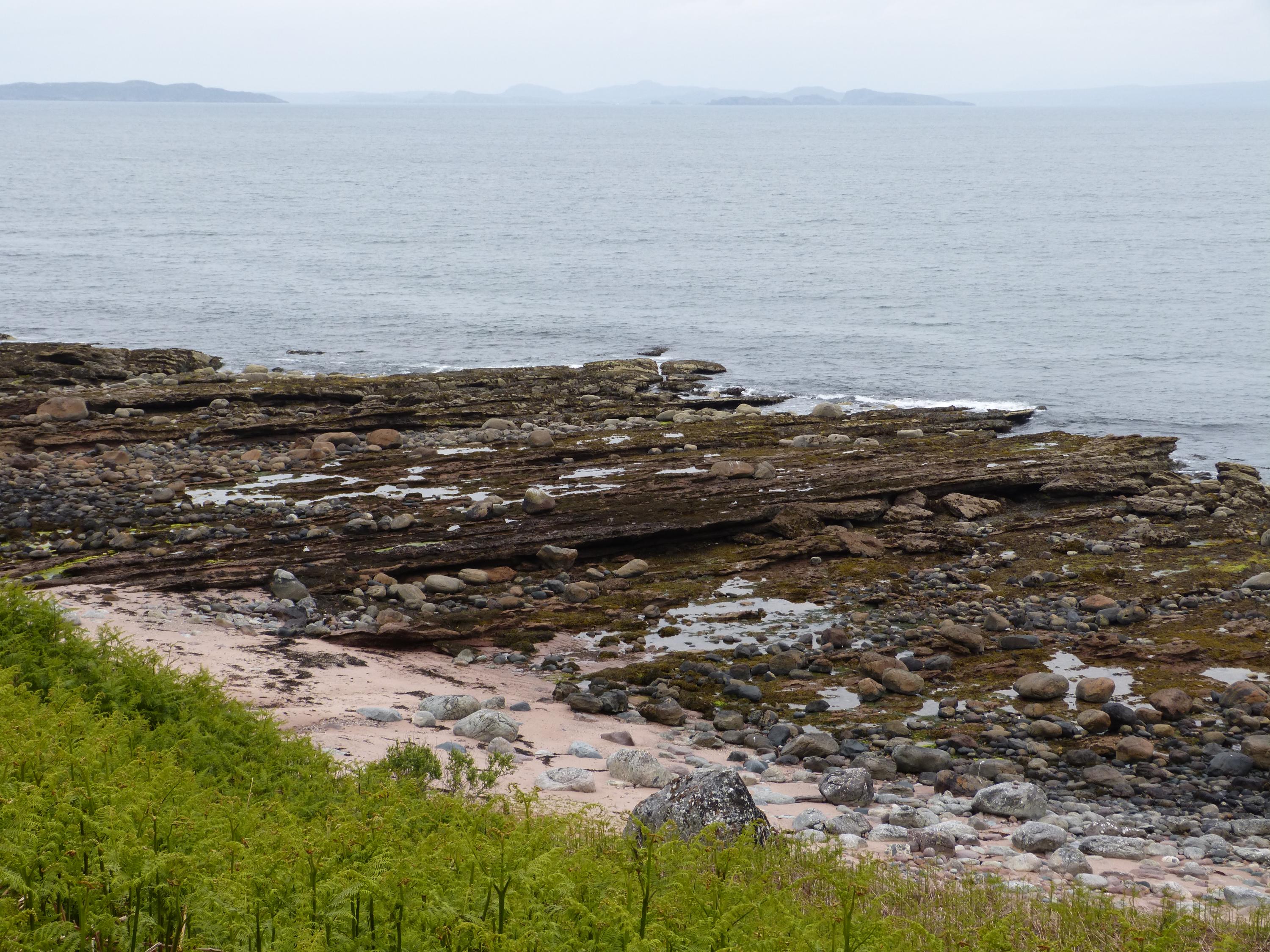
The view of the shore platform from a passing place on the lane to Udrigle shows beds of Triassic sandstones dipping gently north-eastwards.
Alison Tymon
June 10, 2024
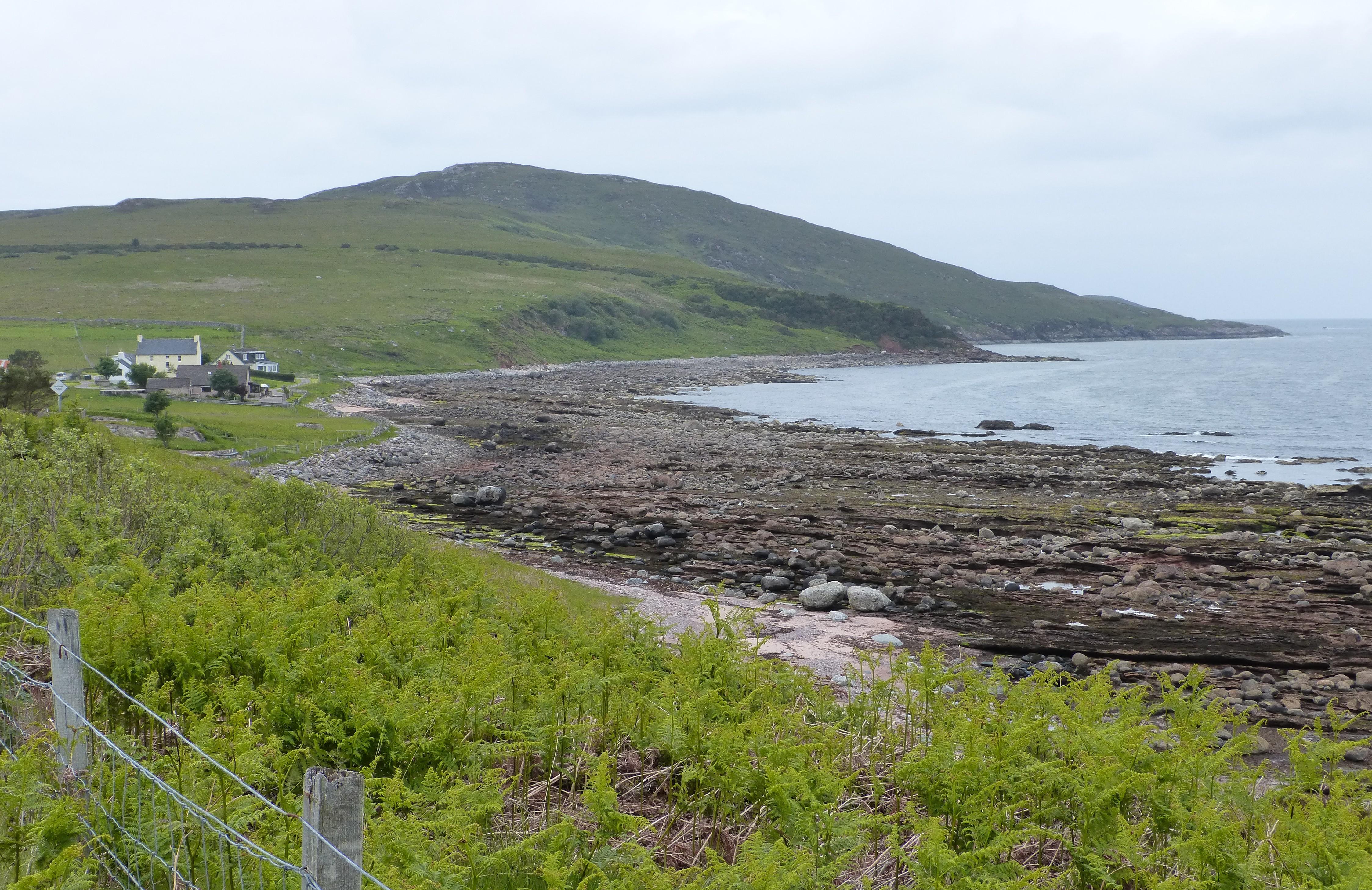
Udrigle House can be seen on the left in this view from the lane. Triassic beds are well-exposed on the shore platform and at the point at Sron a Chuirn Dearg in the distance. Torridonian rocks form the higher hills in the distance.
Alison Tymon
June 10, 2024
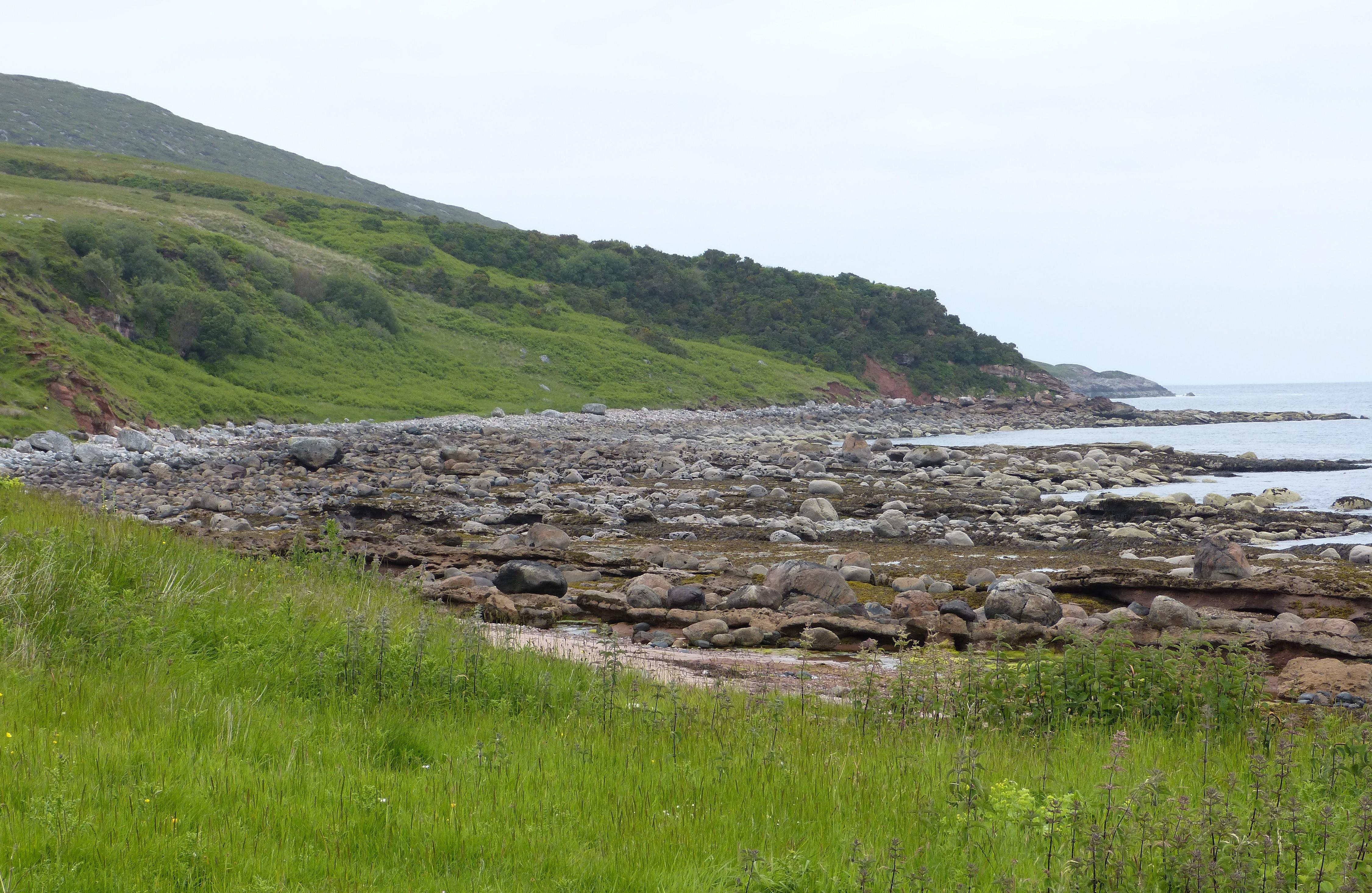
A zoom photo from Udrigle House towards Sron a Chuirn Dearg at the north end of the GCR site shows that Triassic beds are found on the shore platform for several hundred metres north of Udrigle. The cliff exposures between Udrigle and Sron a Chuirn Dearg are similar to the Triassic rocks to the south near Laide, with less-consolidated orange sandstones at the base of the cliff, topped by thick beds of resistant sandstones which dip gently eastward.
Alison Tymon
June 10, 2024